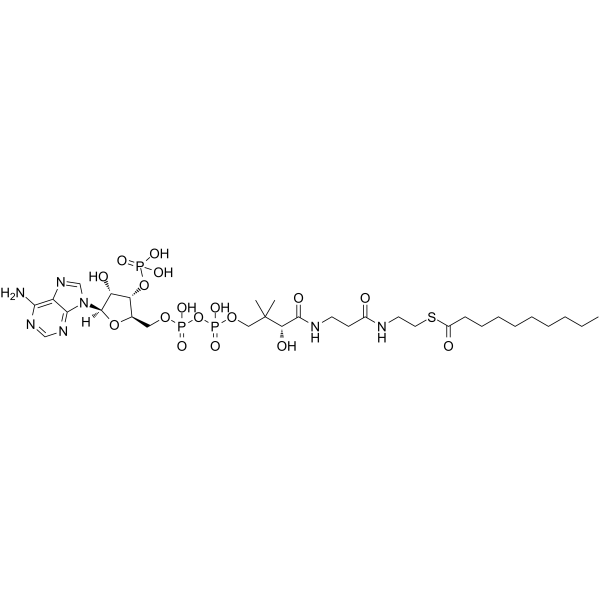Evidence for a peroxisomal fatty acid beta-oxidation involving D-3-hydroxyacyl-CoAs. Characterization of two forms of hydro-lyase that convert D-(-)-3-hydroxyacyl-CoA into 2-trans-enoyl-CoA.
K Engeland, H Kindl
Index: Eur. J. Biochem. 200(1) , 171-8, (1991)
Full Text: HTML
Abstract
A novel D-(-)-3-hydroxyacyl-CoA hydro-lyase, forming 2-trans-enoyl-CoA and formerly designated as epimerase (EC 5.1.2.3), was extracted from fat-degrading cotyledons of cucumber seedlings. The enzyme, called D-3-hydroxyacyl-CoA hydro-lyase or D-specific 2-trans-enoyl-CoA hydratase, is shown to be required for the degradation of unsaturated fatty acids that contain double bonds extending from even-numbered C atoms. The D-3-hydroxyacyl-CoA hydro-lyase was exclusively localized within peroxisomes. A 10,000-fold purification by chromatography on a hydrophobic matrix, a cation exchanger, on hydroxyapatite and Mono S led to two proteins of apparent homogeneity, both exhibiting Mr of 65,000. The D-3-hydroxyacyl-CoA hydro-lyases are homodimers with slightly differing isoelectric points around pH = 9.0. They catalyze the conversion of 2-trans-enoyl-CoA into D-3-hydroxyacyl-CoA. The reverse reaction was observed but no reaction with 2-cis-enoyl-CoAs or L-3-hydroxyacyl-CoAs. 2-trans-Decenoyl-CoA was converted 10-times faster than 2-trans-butenoyl-CoA. The conversion of 4-cis-decenoyl-CoA into octenoyl-CoA was demonstrated in vitro with purified proteins with an assay mixture containing acyl-CoA oxidase, multifunctional protein, thiolase and the D-3-hydroxyacyl-CoA hydro-lyase. Comparisons of enzyme activities present in the cotyledons or isolated peroxisomes clearly show that the pathway via dienoyl-CoA reductase is much less effective than the sequence involving D-3-hydroxyacyl-CoA hydro-lyase.
Related Compounds
| Structure | Name/CAS No. | Molecular Formula | Articles |
|---|---|---|---|
 |
Decanoyl-coenzyme A
CAS:1264-57-9 |
C31H54N7O17P3S |
|
Effect of pH and acyl-CoA chain length on the conversion of ...
1996-08-13 [Biochim. Biophys. Acta 1290(3) , 261-6, (1996)] |
|
Mechanism of Vibrio cholerae autoinducer-1 biosynthesis.
2011-04-15 [ACS Chem. Biol. 6 , 356-365, (2011)] |
|
Insights into the biosynthesis of the Vibrio cholerae major ...
2009-09-25 [J. Mol. Biol. 392 , 763-773, (2009)] |
|
Unexpected stereoselective exchange of straight-chain fatty ...
2010-05-21 [Chem. Commun. (Camb.) 46 , 3348-3350, (2010)] |
|
Acyl coenzyme A esters differentially activate cardiac and b...
2003-10-01 [Metab. Clin. Exp. 52(10) , 1313-9, (2003)] |